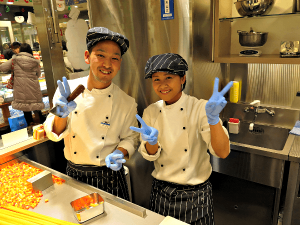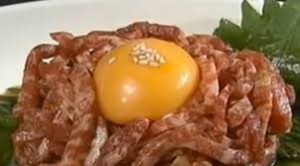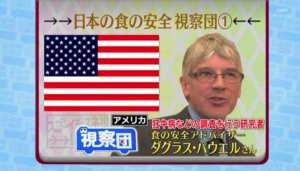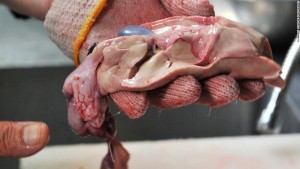Prefectural government officials here are seeking permission to serve a delicacy they say will tantalize taste buds and bring in tourists. But restaurant operators across Japan say the plan could end up killing diners.
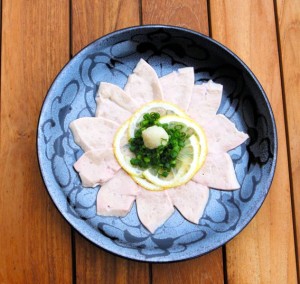 Saga Prefecture on the southern island of Kyushu has, according to The Asahi Shimbun, asked the health ministry to lift a ban on serving the liver of “torafugu,” the tiger pufferfish that carries a poison that is 1,000 times as toxic as potassium cyanide.
Saga Prefecture on the southern island of Kyushu has, according to The Asahi Shimbun, asked the health ministry to lift a ban on serving the liver of “torafugu,” the tiger pufferfish that carries a poison that is 1,000 times as toxic as potassium cyanide.
Prefectural officials say they have found a cultivation method and safety test system that can ensure the safety of pufferfish liver served at restaurants that meet certain conditions.
A nationwide association of 1,800 pufferfish restaurant owners and others disagree with that claim.
“If the prefecture’s proposal is approved, many consumers will mistakenly believe that pufferfish liver is safe to eat, resulting in more accidents,” said Yuichi Makita, 63, vice chairman of the association. “There is no absolute guarantee of safety.”
An expert panel on natural toxins and mycotoxins of the Food Safety Commission held a meeting on May 20 to discuss the prefecture’s proposal.
Food experts and biologists asked various questions, such as the reliability of the methodology to check the toxicity of the farmed pufferfish.
The commission is expected to decide on the proposal within a year.
The toxin of pufferfish is known as tetrodotoxin, and it is contained in the liver, ovaries and other organs, as well as in the skin and muscles.
Between 2006 and 2015, 356 people became ill after consuming pufferfish poison, and 10 of them died.
On May 24, eight people, including a restaurant manager, were arrested by Osaka prefectural police on suspicion of serving the liver of farmed torafugu, a violation of the Food Sanitation Law.
Osamu Arakawa, a professor of aquatic food hygienics at Nagasaki University who is familiar with pufferfish poison, said the toxin is produced from bacilli in seawater.
The toxic substance becomes concentrated in the bodies of pufferfish, which eat poisonous starfish and snails, he said. The possibility of the toxin accumulating in the fish through other channels has also been pointed out.
But a research team from Nagasaki University has surveyed 10,000 pufferfish raised with nontoxic food and confirmed that all of them were not poisonous.



